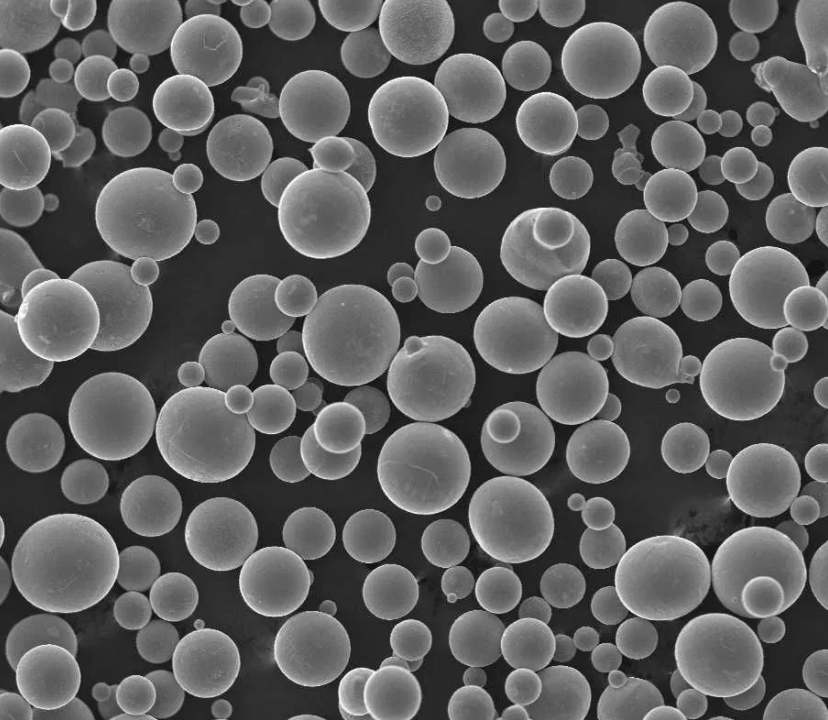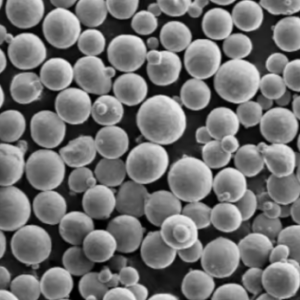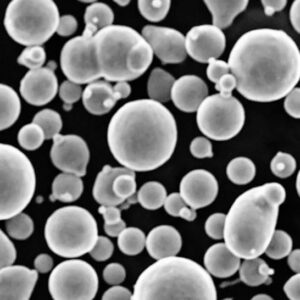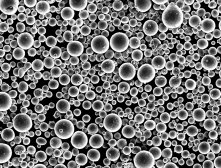Introduction
Hey there! Ever wondered how they make those insanely detailed metal parts in aerospace, automotive, and medical industries? Welcome to the world of Laser Additive Manufacturing (LAM). It’s a mouthful, but essentially, it’s like 3D printing on steroids for metal components. In this article, we’ll take a deep dive into everything LAM—from the types of metal powders used to the ins and outs of the process, and even the pros and cons. So, grab a cup of coffee, sit back, and let’s explore the fascinating realm of Laser Additive Manufacturing.
Overview of Laser Additive Manufacturing (LAM)
Laser Additive Manufacturing is a type of 3D printing technology that uses a laser to fuse metal powders layer by layer to create complex geometries that would be impossible with traditional manufacturing methods. Think of it as sculpting with light—where precision meets creativity. LAM offers a plethora of advantages, such as reduced material waste, the ability to create custom and complex parts, and faster production times compared to conventional methods.
Key Details
- Technology: Uses high-powered lasers to melt and fuse metal powders.
- Applications: Aerospace, automotive, medical implants, tooling, and more.
- Advantages: High precision, reduced waste, rapid prototyping, and customization.

Types and Composition of Metal Powders in LAM
Choosing the right metal powder is crucial for the success of LAM. The type of metal powder affects the mechanical properties, surface finish, and performance of the final part. Let’s break down some of the popular metal powders used in LAM.
| Metal Powder | Composition | Properties | Characteristics |
|---|---|---|---|
| Stainless Steel 316L | Iron, Chromium, Nickel, Molybdenum | Corrosion-resistant, durable | Ideal for medical and marine applications |
| Inconel 625 | Nickel, Chromium, Molybdenum, Niobium | High strength, corrosion-resistant | Used in aerospace and chemical processing |
| Titanium Ti-6Al-4V | Titanium, Aluminum, Vanadium | Lightweight, high strength | Common in aerospace and biomedical fields |
| Aluminum AlSi10Mg | Aluminum, Silicon, Magnesium | Lightweight, good thermal properties | Suitable for automotive and aerospace components |
| Cobalt Chrome CoCr | Cobalt, Chromium, Molybdenum | High wear resistance, biocompatible | Perfect for dental and orthopedic implants |
| Tool Steel H13 | Iron, Chromium, Molybdenum, Vanadium | High hardness, heat-resistant | Used for tooling and molds |
| Copper Cu | Pure Copper | Excellent thermal and electrical conductivity | Great for heat exchangers and electrical components |
| Nickel Alloy 718 | Nickel, Chromium, Iron, Molybdenum, Niobium | High strength, heat-resistant | Common in aerospace engines and power generation |
| Maraging Steel | Iron, Nickel, Cobalt, Molybdenum, Titanium | Ultra-high strength, toughness | Utilized in tooling and high-performance applications |
| Tungsten W | Pure Tungsten | High density, heat-resistant | Used in high-temperature environments and radiation shielding |
Applications of Laser Additive Manufacturing
LAM has revolutionized numerous industries by enabling the production of complex and high-performance parts. Here’s a closer look at where LAM is making waves.
| Industry | Application | Examples |
|---|---|---|
| Aerospace | Lightweight structural components | Turbine blades, fuel nozzles |
| Automotive | Engine parts, custom prototypes | Pistons, intake manifolds |
| Medical | Customized implants, surgical tools | Hip implants, dental crowns |
| Tooling | Durable molds, cutting tools | Injection molds, die-casting molds |
| Energy | High-performance parts for power generation | Turbine components, heat exchangers |
| Jewelry | Intricate designs, custom pieces | Rings, bracelets |
| Consumer Goods | Customizable products | Eyewear frames, fashion accessories |
Specifications, Sizes, and Standards in LAM
When it comes to LAM, precision and adherence to standards are paramount. Different metal powders come with various specifications and standards to ensure quality and performance.
| Metal Powder | Specifications | Sizes (μm) | Standards |
|---|---|---|---|
| Stainless Steel 316L | ASTM A240 | 15-45 | ISO 5832-1 |
| Inconel 625 | ASTM B443 | 15-53 | AMS 5666 |
| Titanium Ti-6Al-4V | ASTM F1472 | 20-60 | ISO 5832-3 |
| Aluminum AlSi10Mg | ASTM F3318 | 10-45 | ISO 3522 |
| Cobalt Chrome CoCr | ASTM F75 | 15-50 | ISO 5832-4 |
| Tool Steel H13 | ASTM A681 | 15-45 | DIN 1.2344 |
| Copper Cu | ASTM B170 | 15-63 | ASTM B216 |
| Nickel Alloy 718 | ASTM B637 | 15-53 | AMS 5662 |
| Maraging Steel | ASTM A538 | 20-63 | AMS 6514 |
| Tungsten W | ASTM B777 | 15-45 | ASTM B781 |
Suppliers and Pricing Details
Navigating the market for LAM metal powders involves understanding the key suppliers and their pricing structures. Here’s a rundown of some leading suppliers and what you might expect to pay.
| Supplier | Metal Powder | Price Range (per kg) | Notes |
|---|---|---|---|
| EOS GmbH | Stainless Steel 316L, Titanium Ti-6Al-4V | $150 – $300 | Leading LAM supplier, high quality |
| 3D Systems | Inconel 625, Aluminum AlSi10Mg | $200 – $400 | Comprehensive material portfolio |
| Carpenter Additive | Cobalt Chrome CoCr, Tool Steel H13 | $250 – $500 | Custom powder solutions |
| Höganäs AB | Copper Cu, Maraging Steel | $100 – $250 | Broad range of metal powders |
| GKN Additive | Nickel Alloy 718, Tungsten W | $300 – $600 | High-performance materials |
Comparing Pros and Cons of LAM
When considering LAM for your manufacturing needs, it’s essential to weigh the advantages and disadvantages. Here’s a balanced view.
| Aspect | Advantages | Disadvantages |
|---|---|---|
| Design Flexibility | Create complex geometries, customization | Design limitations due to support structures |
| Material Efficiency | Reduced waste, less material usage | Higher cost of metal powders |
| Speed | Rapid prototyping, faster production | Slower for large-scale production |
| Mechanical Properties | High strength, tailored properties | Potential for residual stresses |
| Cost | Lower tooling costs, cost-effective for small batches | High initial investment in equipment |
How LAM Stacks Up Against Traditional Manufacturing
So, how does LAM compare to traditional manufacturing methods? Let’s break it down.
| Parameter | LAM | Traditional Manufacturing |
|---|---|---|
| Setup Time | Shorter, rapid setup | Longer, extensive tooling |
| Complexity | Handles complex designs easily | Limited by machining capabilities |
| Material Waste | Minimal, efficient use | Significant, more waste |
| Production Volume | Best for low to medium volumes | Economical for high volumes |
| Customization | High, easily customizable | Low, expensive for customization |

FAQ
Q: What is Laser Additive Manufacturing (LAM)?
A: LAM is a type of 3D printing that uses lasers to melt and fuse metal powders layer by layer, creating highly detailed and complex parts.
Q: What metals can be used in LAM?
A: Common metals include stainless steel, Inconel, titanium, aluminum, cobalt chrome, tool steel, copper, nickel alloy, maraging steel, and tungsten.
Q: What are the advantages of LAM?
A: Key advantages include high precision, reduced material waste, rapid prototyping, and the ability to create complex and customized parts.
Q: How does LAM compare to traditional manufacturing?
A: LAM offers shorter setup times, better handling of complex designs, minimal material waste, and high customization, but it can be slower and more expensive for large-scale production.
Q: What industries use LAM?
A: LAM is used in aerospace, automotive, medical, tooling, energy, jewelry, and consumer goods industries.
Q: How much do metal powders for LAM cost?
A: Prices range from $100 to $600 per kilogram, depending on the metal type and supplier.
Q: What are the common standards for LAM metal powders?
A: Standards include ASTM and ISO specifications specific to each metal type, ensuring quality and performance.
Q: Can LAM handle large-scale production?
A: While LAM is excellent for low to medium volumes, it can be slower and less cost-effective for large-scale production compared to traditional methods.














